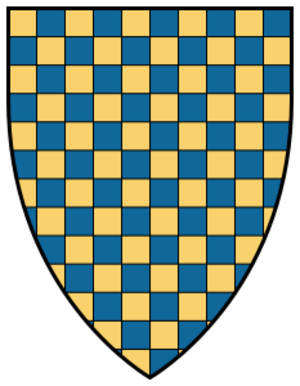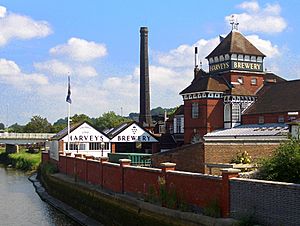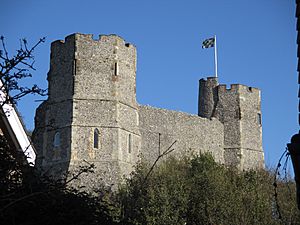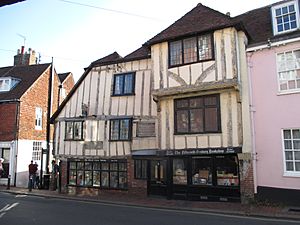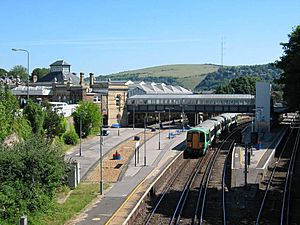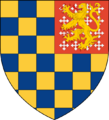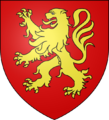Lewes facts for kids
Quick facts for kids Lewes |
|
|---|---|
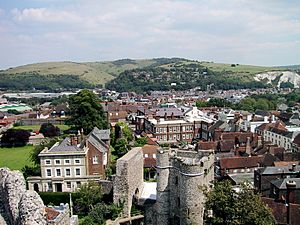 Lewes viewed from Lewes Castle |
|
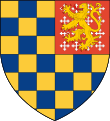 Coat of arms of Lewes |
|
| Area | 11.4 km2 (4.4 sq mi) |
| Population | 17,297 (Parish-2011) |
| • Density | 1,420/km2 (3,700/sq mi) |
| Demonym | Lewesian |
| OS grid reference | TQ420104 |
| • London | 71 km (44 mi) N |
| Civil parish |
|
| District |
|
| Shire county | |
| Region | |
| Country | England |
| Sovereign state | United Kingdom |
| Post town | LEWES |
| Postcode district | BN7 |
| Dialling code | 01273 |
| Police | Sussex |
| Fire | East Sussex |
| Ambulance | South East Coast |
| EU Parliament | South East England |
| UK Parliament |
|
Lewes (pronounced LOO-iss) is a historic town in East Sussex, England. It's the main town of the county and also the center for the larger Lewes district. The town sits right on the River Ouse, where the river cuts through the beautiful South Downs hills.
Lewes is known as a traditional market town and a hub for travel. A very important event in its history was the Battle of Lewes in 1264. Famous places in Lewes include Lewes Castle, the old Lewes Priory, and Anne of Cleves House. This house is a 16th-century timber-framed building. You can also visit Southover Grange and its public gardens.
Other cool things about the area are the Glyndebourne opera festival, the exciting Lewes Bonfire celebrations, and even its own local money, the Lewes Pound.
Contents
- What's in a Name? The Story of Lewes
- Lewes Through Time: A Brief History
- Exploring Lewes: Geography and Nature
- Places of Worship in Lewes
- Lewes Life: Economy and Community
- Lewes Bonfire: A Fiery Tradition
- Lewes's Economy: Local Businesses and Money
- Famous Places to See in Lewes
- Art and Sculptures in Lewes
- Getting Around Lewes: Transport
- Learning in Lewes: Schools and Colleges
- Lewes Culture: Music, Arts, and More
- Sports in Lewes
- Famous People from Lewes
- Lewes's Sister Towns
- Images for kids
- See also
What's in a Name? The Story of Lewes
The name 'Lewes' first appeared around 961 AD as Læwe. Later, in the 1086 Domesday Book, it was called Lewes. The extra 's' was added by scribes from Anglo-Norman times. They often made Anglo-Saxon place names plural.
One idea is that Læwe comes from an old English word, hlæw. This word means 'hill' or 'burial mound'. This might refer to School Hill, where the town's historic center stands. It could also mean one of the five ancient burial mounds that used to be nearby.
Another idea suggests the name comes from a rare Old English word, lǣw. This means 'wound' or 'incision'. This fits because Lewes overlooks a narrow, steep 'gash' where the River Ouse cuts through the South Downs.
A third idea is that Læwe comes from lexowia, an Old English word meaning 'hillside' or 'slope'. Lewes certainly has many hillsides!
Lewes Through Time: A Brief History
Early Days: Before the Saxons
Lewes is in a special spot where the River Ouse flows through a narrow gap in the South Downs. This location was important even in the Iron Age. People built a hill-fort on Mount Caburn, a steep hill overlooking the town. This fort helped control travel between the Channel coast and inland Sussex.
During Roman times, there was a fancy Roman villa nearby. Roman coins and pottery have been found in Lewes. Some historians thought there might have been a Roman town here, but there's no strong proof yet.
Anglo-Saxon and Norman Times
The first Anglo-Saxon settlers arrived in Sussex around the 6th century. Lewes was probably founded around this time. It might have been one of the most important settlements in the Kingdom of Sussex.
By the 9th century, Sussex became part of the Kingdom of Wessex. Alfred the Great later fortified Lewes. He built a network of strongholds called burhs to protect against Viking raids. This made Lewes a safe and busy place. By 1065, it was one of the richest towns in the county!
After the Norman Conquest in 1066, William the Conqueror gave Lewes to his friend, William de Warenne. William built Lewes Castle inside the old Saxon stronghold. His wife, Gundreda, also started the Lewes Priory, a type of monastery, around 1081.
The Battle of Lewes: A Turning Point
In 1264, during the Second Barons' War, King Henry III was surprised by rebel barons. Their leader was Simon de Montfort. The king marched out to fight, and a big battle happened on the hills above Lewes.
The king's son, Prince Edward, led part of the royal army. He chased some of the rebels too far away. While he was gone, de Montfort and Gilbert de Clare attacked the rest of the royal army. They won a big victory. The king's brother was captured, and the king had to sign an agreement called the Mise of Lewes. This battle is seen as a key moment in the development of English democracy.
Later Medieval and Early Modern Lewes
After the de Warenne family, the Fitzalan family took over Lewes. But they preferred to live at Arundel Castle. This meant Lewes lost some of its importance.
The town faced more problems. In 1348, the terrible Black Death arrived in England. Later, the Hundred Years' War brought French and Spanish raids to Sussex. These raids made trade difficult.
During the English Reformation, Henry VIII closed down monasteries. Lewes Priory was destroyed in 1538. Later, under Mary I, many Protestants were persecuted. Lewes became a sad site for the execution of seventeen Protestant martyrs. They were burned at the stake between 1555 and 1557. The Lewes Bonfire celebrations still remember these martyrs today. A memorial to them was put up on Cliffe Hill in 1901.
Lewes was a strong supporter of Parliament during the English Civil War. In 1642, a royalist attack on the town was stopped at the Battle of Muster Green. After the war, Lewes recovered well. It became a busy market town and port. It also had growing industries like textiles, iron, brewing, and shipbuilding.
Modern Lewes: From Snow to Floods
In 1836, a huge snowdrift on Cliffe Hill collapsed. This Lewes avalanche was the deadliest ever in Britain. It buried fifteen people, and eight died. A pub in South Street is named The Snowdrop to remember this event.
In 1846, Lewes became a railway hub with lines connecting from different directions. However, the growth of Newhaven as a port meant Lewes was no longer the main port. During the Crimean War, about 300 Finnish prisoners were held in Lewes.
In October 2000, Lewes suffered major flooding. The town center and many homes were badly damaged. Lewes was officially noted as the most affected place in a government report about the nationwide flooding. This led to the formation of the Lewes Flood Action group, which works for better flood protection.
Exploring Lewes: Geography and Nature
Lewes is located on the Greenwich Meridian. It sits in a gap in the South Downs hills, carved out by the River Ouse. It's about 7 miles (11 km) north of Newhaven and Brighton.
The South Downs rise on both sides of the river. The High Street, where the oldest part of town is, climbs steeply from the bridge. On the east side, there's a large chalk cliff called Cliffe Hill. Other hills nearby include Mount Caburn and Malling Down.
The two sides of the river are connected by several bridges. The High Street is the main road through the old town. The area called Cliffe, now part of the town, is named after Cliffe Hill. Southover, in the southern part of town, grew up next to the old Priory.
The Pells Pool, built in 1860, is the oldest outdoor freshwater swimming pool in England. The Phoenix Industrial Estate along the river has businesses and a fire station. There's a big plan to redevelop this area, called "The Phoenix Project."
You can enjoy many walks starting from Lewes. You can hike on Mount Caburn, explore the Lewes Brooks (an RSPB nature reserve), or walk along the Ouse. The South Downs Way, a famous long-distance path, crosses the Ouse just south of Lewes.
Amazing Natural Spots
Three special nature sites are in Lewes: Lewes Downs, Lewes Brooks, and Southerham Works Pit. Lewes Downs is a unique part of the South Downs. Lewes Brooks is a floodplain of the River Ouse, home to many insects like water beetles and snails. Southerham Works Pit is an old chalk pit with many fossilized fish remains.
The Railway Land nature reserve is on the east side of town by the Ouse. It has woodlands and marshes. You can find the marsh frog here, which is an introduced species. The Winterbourne stream flows through this reserve. It flows mostly in winter and dries up in summer, giving it its name.
On August 21, 1864, Lewes even experienced a small earthquake!
Lewes Weather
Lewes has a mild climate with not much difference between high and low temperatures. It gets a good amount of rain all year round. This type of weather is called a "Marine West Coast Climate."
| Climate data for Lewes, UK | |||||||||||||
|---|---|---|---|---|---|---|---|---|---|---|---|---|---|
| Month | Jan | Feb | Mar | Apr | May | Jun | Jul | Aug | Sep | Oct | Nov | Dec | Year |
| Mean daily maximum °C (°F) | 8 (46) |
8 (46) |
9 (48) |
11 (52) |
15 (59) |
17 (63) |
19 (66) |
20 (68) |
18 (64) |
14 (57) |
11 (52) |
8 (46) |
9 (48) |
| Mean daily minimum °C (°F) | 5 (41) |
4 (39) |
6 (43) |
7 (45) |
10 (50) |
12 (54) |
15 (59) |
15 (59) |
13 (55) |
10 (50) |
7 (45) |
5 (41) |
9 (48) |
| Average precipitation days | 12 | 10 | 9 | 7 | 7 | 6 | 8 | 8 | 9 | 10 | 11 | 11 | 900 |
| Source: Weatherbase | |||||||||||||
Places of Worship in Lewes
Lewes has many churches and other religious buildings.
Church of England Churches
- St Michael's is at the top of the High Street. It has a unique round tower with a shingled spire.
- St Anne's is a quiet church surrounded by its graveyard.
- St John sub Castro (meaning St John-under-the-Castle) is in the northern part of the old town. The original Saxon church was rebuilt in the 19th century. In its graveyard, there's a memorial to Finnish prisoners held in Lewes in the 1800s.
- St Thomas à Becket's is in Cliffe.
- St John the Baptist's in Southover has part of the old Priory building in its nave.
- St. Michael, South Malling dates from 1628.
Old Churches Now Used Differently
- All Saints' church is now a community arts space. It used to be next to a monastery of Grey Friars.
Roman Catholic Church
The Roman Catholic church is named after St. Pancras, remembering the old Priory. It's a red-brick building across the street from St Anne's.
Other Churches
- Lewes Friends Meeting House is a Quaker meeting house built in 1784.
- The Jireh Chapel is a very old building from 1805. It's now the Lewes Free Presbyterian Church.
- Westgate Chapel is a 16th-century building on the old town wall foundations. It's now an independent chapel.
- Eastgate Chapel is a different style, built in 1843.
- Christ Church is a modern building (1953) used by both United Reformed Church and Methodist worshippers.
Lewes Life: Economy and Community
Most people in Lewes work in service industries, like shops, offices, and tourism. Lewes is a popular place for tourists because of its many historic sites. The town also has the headquarters for several local government offices and the Sussex Police.
Lewes Bonfire: A Fiery Tradition
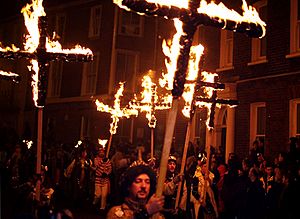
The most important event in Lewes each year is the Lewes Bonfire celebrations on November 5th, Guy Fawkes Night. This event not only marks the discovery of the Gunpowder Plot in 1605, but it also remembers the seventeen Lewes Martyrs. These Protestants were burned at the stake for their faith during the Marian Persecutions. The celebrations are the largest and most famous Bonfire Night events in the country.
Lewes's Economy: Local Businesses and Money
Lewes has many unique, independent shops, which is different from the trend of big chain stores. The Lewes Farmers' Market is very popular. It started in the 1990s and happens twice a month. Local food producers sell their goods there.
Since 1794, beers, wines, and spirits have been sold under the Harveys name in Lewes. Today, Harvey & Son's brewery is still in town. It's known as one of the best ale producers in England.
In 2008, Lewes even launched its own money, the Lewes Pound! One Lewes Pound is worth the same as one British pound. This was done to encourage people to spend money in local businesses. It's part of the Transition Towns movement, which aims to make communities more self-sufficient.
Famous Places to See in Lewes
Lewes has many important old buildings. These include Lewes Castle, the remains of Lewes Priory, and Bull House. Bull House was once the home of Thomas Paine, a famous writer and revolutionary. You can also visit Southover Grange and its public gardens.
Another cool place is Anne of Cleves House. This 16th-century timber-framed house was given to Anne of Cleves as part of her divorce from Henry VIII. She never actually lived there! Both Anne of Cleves House and the castle are looked after by the Sussex Archaeological Society.
Keere Street is a steep, cobbled street with many old buildings. The gardens on one side of the street are next to the old Town Walls. The Prince Regent once drove his carriage down this street!
Many old buildings in Lewes still have their original medieval designs, even if they have newer fronts. The 18th-century buildings are especially nice. Some are covered in special tiles that look like fine brick.
At the highest point of the old town, you'll find the Lewes Crown Court, the brick Market Tower, and the Lewes War Memorial. These mark the historic center. Down by the river, Harvey & Son's Brewery is a beautiful 19th-century building. It's the only one of the town's five original major breweries still in use.

Southover Grange is a Tudor manor house built in 1572. It was made using stones from the ruins of Lewes Priory. The house and its gardens were bought by the council in 1945 and opened to the public. The gardens are lovely, with formal displays, a wildflower area, and special trees. One tree was even planted by Queen Elizabeth II!
A special feature of Lewes is its network of narrow alleyways called 'twittens'. These run north-south on either side of the High Street and date back to Anglo-Saxon times. Some twittens are still narrow paths, while others are now one-way roads. Keere Street is the most famous twitten.
Art and Sculptures in Lewes
Historic Art
Lewes has a connection to famous sculptors like Eric Gill and John Skelton. The famous sculpture The Kiss by Rodin was once owned by a collector in Lewes. It was even displayed in the Town Hall for a short time before moving to the Tate Gallery in London.
Modern Art
You can find several sculptures around Lewes today. The Helmet (1964) is in the grounds of Lewes Priory. The Cuilfail Spiral (1983) is a large stone sculpture at the north end of the Cuilfail Tunnel. The Janus Head (1997) and Lewes Group (2010) are in Southover Grange Gardens. There's also a sculpture of Thomas Paine outside the new Lewes Library.
Getting Around Lewes: Transport
Lewes has always been an important place for travel. Major roads like the A27 pass south of the town. Other main roads, the A26 and A275, come from the north. Local bus companies also serve the town.
Lewes railway station was once a junction for six train routes. Today, you can still catch fast trains to London. The East Coastway Line connects Lewes to Brighton, Eastbourne, and Hastings. There's also a branch line to Seaford.
Long-distance walking paths also pass through or near Lewes. The Vanguard Way goes east of town, and the South Downs Way crosses the Ouse just south of Lewes. The Greenwich Meridian Trail goes right through the middle of the town.
Learning in Lewes: Schools and Colleges
Primary Schools
Lewes has several primary schools for younger students:
- Morley House (part of Lewes Old Grammar School)
- South Malling School
- Southover School
- Wallands Community Primary and Nursery School
- Western Road School
Southover and Western Road schools share buildings and a field.
Secondary Schools
There are two secondary schools in Lewes and one nearby:
- Lewes Old Grammar School: An independent school that also has a sixth form.
- Priory School: This school specializes in arts, languages, and science.
- Kings Academy Ringmer: About three and a half miles from Lewes, for ages 11 to 16.
Further Education
East Sussex College has a campus in Lewes. It offers many courses for older students, including A Levels, GCSEs, and vocational qualifications.
Lewes Culture: Music, Arts, and More
Classical Music
Just outside Lewes is Glyndebourne opera house, famous for its summer festival. Lewes also has its own opera society and other classical music groups. The Lewes Chamber Music Festival and Lewes Festival of Song are annual events.
Museums and Art Galleries
The main museum is Barbican House Museum at Lewes Castle. It has exhibits on Sussex archaeology. Anne of Cleves House also has collections about Lewes's history. There are several art galleries in town, like the Star Brewery Gallery and Chalk Gallery.
Theatre and Cinema
Lewes Little Theatre has been putting on plays since 1939. It has its own building on Lancaster Street. The Lewes Depot is a modern three-screen cinema that opened in 2017. The Lewes Film Club also shows movies.
Popular Music and Clubs
You can find live music at many pubs and venues in Lewes. The Lewes Con Club, the Snowdrop Inn, and the Lewes Arms are popular spots. Union Music Store in Lewes is a center for folk, country, and Americana music. A monthly comedy club also takes place at the Con Club.
Lewes hosts a regular music festival called Lewes Live. The town was also a stop for Mumford and Sons' Gentlemen of the Road tour in 2013. The Love Supreme Festival, a big jazz festival, happens nearby at Glynde Place.
Art and Festivals
Annual art events include ArtWave and the children's Patina Moving on Parade. Lewes Light is an annual festival of light art installations. The Reeves Studio, a photography studio, has been running in Lewes since 1855, making it one of the oldest in the world!
Literature and History
Many authors have lived in or near Lewes, and the town appears in their books. Thomas Paine lived here, and his ideas still inspire writers in the town today.
Lewes is the birthplace of the 16th-century composer Nicholas Yonge. In the 1960s, Charlie Watts from the Rolling Stones lived here. Other musicians like Herbie Flowers and Arthur Brown also live in Lewes.
Daisy Ashford wrote her famous book The Young Visiters while living in Lewes. The writer Virginia Woolf briefly owned a windmill in Lewes. The famous diarist John Evelyn spent his childhood at Southover Grange.
Sports in Lewes
Lewes has a long history with sports. In 1694, there's a record of a bet on a cricket match in Lewes, which is one of the earliest mentions of the sport!
Lewes Priory Cricket Club plays at the Stanley Turner Ground. Lewes Rugby Football Club, founded in 1930, has many teams for different ages and levels. The local football team is Lewes FC. In 2017, they became the first club in the world to pay their men's and women's teams equally!
Lewes Hockey Club is one of the oldest hockey clubs in Sussex. Lewes Tennis/Hockey Club has many courts for tennis, squash, and netball. Lewes Bowls Club and Lewes Golf Club also offer places to play.
Lewes Athletic Club trains at a track on Mountfield Road. Lewes Swimming Club has over 300 members. Lewes Wanderers Cycling Club organizes regular bike races. The Moyleman is an off-road marathon race around the hills of Lewes.
Lewes Racecourse operated for 200 years until 1964. Horse training continued there until 2020.
Famous People from Lewes
Many notable people have lived in Lewes. Thomas Paine (1737–1809), a famous writer and revolutionary, worked as an excise officer in Lewes before moving to America.
In science, Gideon Mantell discovered and identified fossilized dinosaur teeth here. Lewes doctor Richard Russell helped make Brighton a popular resort.
Musicians like Herbie Flowers, Arthur Brown, and Tim Rice-Oxley from Keane have lived in Lewes.
Daisy Ashford wrote her famous book The Young Visiters while living in Lewes. The diarist John Evelyn spent his childhood at Southover Grange.
Lewes's Sister Towns
Lewes is twinned with two towns:
- Waldshut-Tiengen, Germany (since 1974)
- Blois, France (since 1963)
Images for kids
-
Lewes viewed from Lewes Castle
-
Procession of the martyrs' crosses, as part of Lewes' Bonfire Night celebrations
-
Bull House: Thomas Paine's home
See also
 In Spanish: Lewes para niños
In Spanish: Lewes para niños



